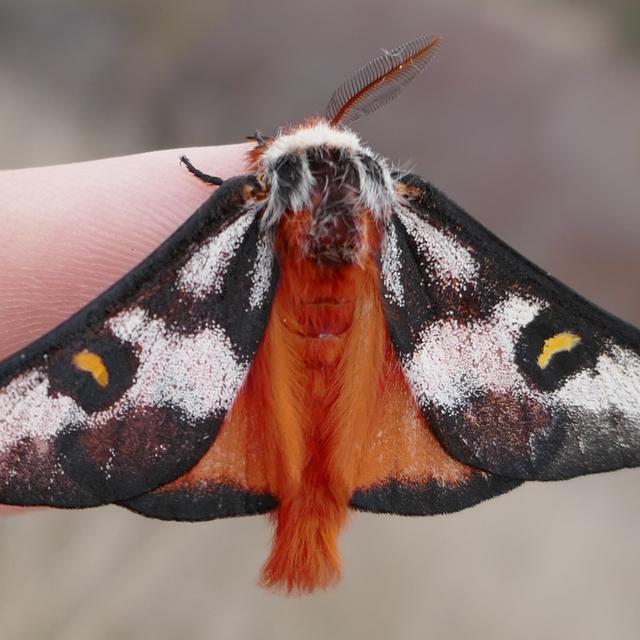Electra buckmoth
Hemileuca electra W.G. Wright, 1884
Family: Saturniidae
Subfamily: Hemileucinae
Identification: Upperside of forewing is white with black margins, black at the base, and black-outlined cell spots. Upperside of hindwing is orange with black margins and a black cell spot. Moths from southern California have more black markings on the forewing, while those from central Arizona have redder hindwings and heavier black markings; some forewings are almost solid black.
Wing Span: 2 3/16 - 3 1/16 inches (5.6 - 7.8 cm).
Life History: Adults emerge in early morning and mating takes place in mid-morning. In the afternoon, females lay eggs on dried flower heads or in rings around the stems of the host plants. Eggs overwinter and hatch from January-March. Young caterpillars feed together on new plant growth and when they are older they feed alone. In April or May fully-grown caterpillars spin loose cocoons in plant debris or in loose soil.
Flight: One brood from September-November.
Caterpillar Hosts: Flat top buckwheat (Eriogonum fasciculatum) and Eastern Mojave buckwheat (Eriogonum fasciculatum polifolium).
Adult Food: Adults do not feed.
Habitat: California coastal scrub, deserts, and desert upland.
Range: Southwestern Utah, southeastern Nevada, and northwestern Arizona south to central Arizona, southern California, and Baja California Sur.
Conservation: Not usually required.
NCGR: G5 - Demonstrably secure globally, though it may be quite rare in parts of its range, especially at the periphery.
Management Needs: None reported.
Comments: NULL
Get your BAMONA Gear!
Please donate!
We depend on donations to keep Butterflies and Moths of North America freely available. We want to express our gratitude to all who showed their support by making a contribution this year. You can donate to support this project at any time.
Advertise with us!
Do you have a product or service that you think would interest BAMONA users? If you would like to advertise on this website, contact us by email, or use the contact form and select the "Advertising" category.
Verified Sightings
Displaying 1 - 24 of 34 verified sightings

Observation date: Nov 11, 2019
Submitted by: Dovecenter
Region: Bernalillo County, New Mexico, United States
Verified by: jwileyrains
Verified date: Sep 16, 2023

Observation date: Oct 23, 2022
Submitted by: TaggartCA
Region: Riverside County, California, United States
Verified by: ishaan2009
Verified date: Oct 26, 2022
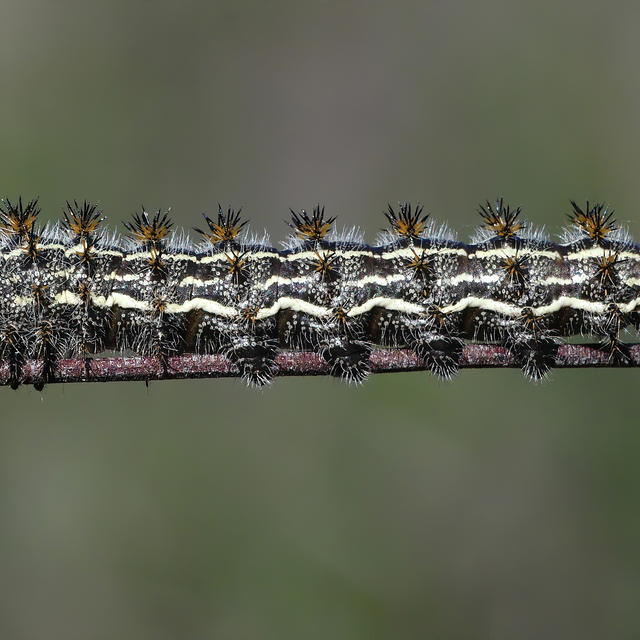
Observation date: May 01, 2022
Submitted by: Bdog
Region: Riverside County, California, United States
Verified by: jwileyrains
Verified date: May 05, 2022

Observation date: Mar 14, 2022
Submitted by: Bdog
Region: Riverside County, California, United States
Verified by: jwileyrains
Verified date: May 05, 2022
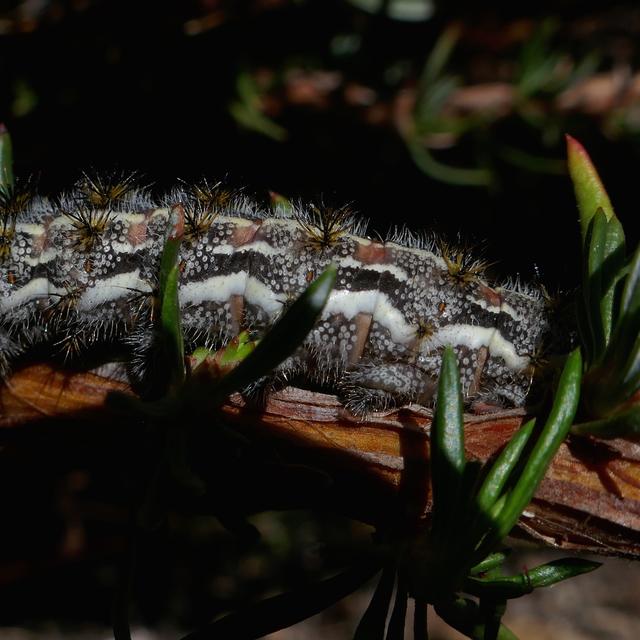
Observation date: Mar 08, 2022
Submitted by: Robert Gorman
Region: Riverside County, California, United States
Verified by: ishaan2009
Verified date: May 02, 2022

Observation date: Oct 21, 2019
Submitted by: klu529
Region: Riverside County, California, United States
Verified by: mcduck
Verified date: Dec 21, 2021

Observation date: Nov 18, 2021
Submitted by: Robert Gorman
Region: Riverside County, California, United States
Verified by: ishaan2009
Verified date: Dec 06, 2021

Observation date: Oct 11, 2021
Submitted by: Robert Gorman
Region: Riverside County, California, United States
Verified by: ishaan2009
Verified date: Oct 14, 2021
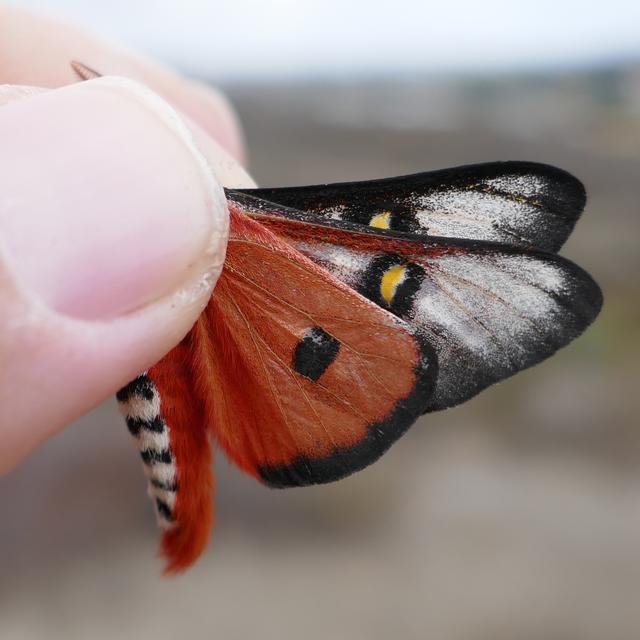
Observation date: Oct 11, 2021
Submitted by: Robert Gorman
Region: Riverside County, California, United States
Verified by: ishaan2009
Verified date: Oct 14, 2021

Observation date: Nov 29, 2014
Submitted by: robinson_michae...
Region: Orange County, California, United States
Verified by: Robert Martin
Verified date: Nov 30, 2014

Observation date: Sep 19, 2014
Submitted by: MrThornton
Region: Riverside County, California, United States
Verified by: Josiah Gilbert
Verified date: Sep 20, 2014
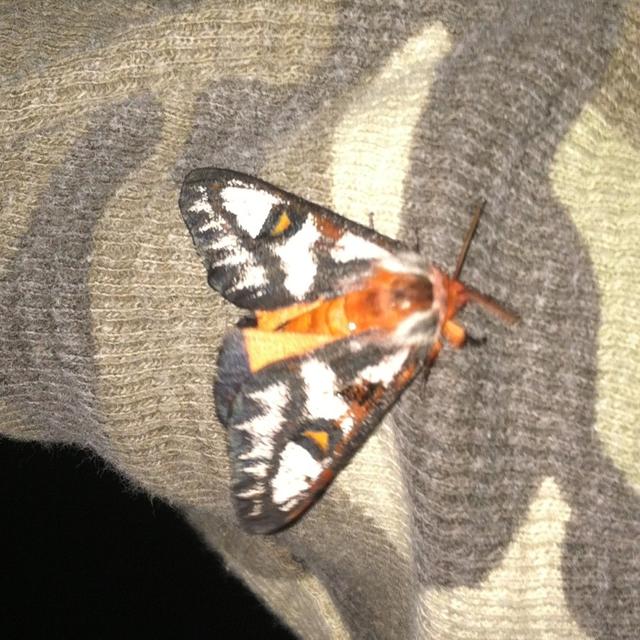
Observation date: Oct 02, 2013
Submitted by: kitty.oi
Region: Riverside County, California, United States
Verified by: Josiah Gilbert
Verified date: Oct 07, 2013

Observation date: Oct 20, 2011
Submitted by: Bill Truesdell
Region: Riverside County, California, United States
Verified by: kellyrichers
Verified date: Jun 21, 2012
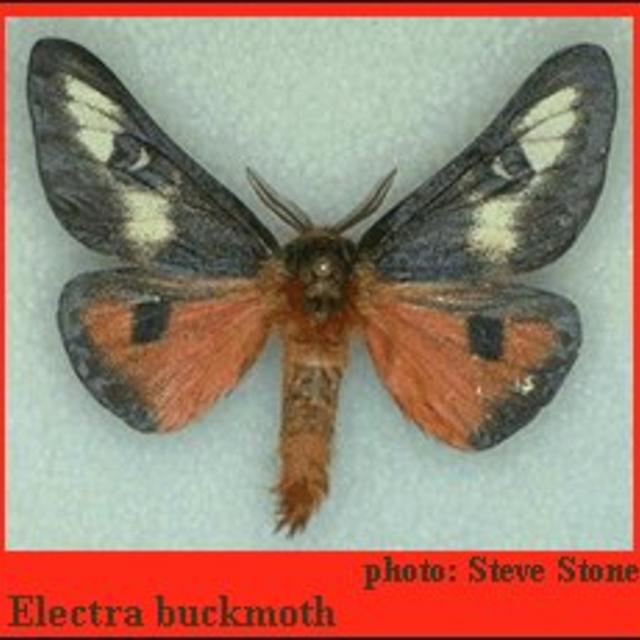
Observation date: unknown
Submitted by: BAMONA
Region:
Verified by: BAMONA
Verified date: Sep 06, 2010
Observation date: Sep 29, 1987
Submitted by: legacy.reporter (Michael J. Smith)
Region: Mohave County, Arizona, United States
Verified by: legacy.verifier (The Lepidopterists' Society Season Summary)
Verified date: Jan 28, 2009
Observation date: Jan 30, 1988
Submitted by: legacy.reporter (Michael J. Smith)
Region: Gila County, Arizona, United States
Verified by: legacy.verifier (The Lepidopterists' Society Season Summary)
Verified date: Jan 28, 2009
Observation date: Mar 11, 1975
Submitted by: legacy.reporter (Kenneth C. Hansen)
Region: Mohave County, Arizona, United States
Verified by: legacy.verifier (The Lepidopterists' Society Season Summary)
Verified date: Jan 28, 2009
Observation date: Oct 25, 1987
Submitted by: legacy.reporter (Michael J. Smith)
Region: Maricopa County, Arizona, United States
Verified by: legacy.verifier (The Lepidopterists' Society Season Summary)
Verified date: Jan 28, 2009
Observation date: unknown
Submitted by: legacy.reporter
Region: Los Angeles County, California, United States
Verified by: legacy.verifier
Verified date: Dec 31, 2004
Observation date: unknown
Submitted by: legacy.reporter
Region: Washington County, Utah, United States
Verified by: legacy.verifier
Verified date: Dec 31, 2004
Observation date: unknown
Submitted by: legacy.reporter
Region: San Bernardino County, California, United States
Verified by: legacy.verifier
Verified date: Dec 31, 2004
Observation date: unknown
Submitted by: legacy.reporter
Region: Mohave County, Arizona, United States
Verified by: legacy.verifier
Verified date: Dec 31, 2004
Observation date: unknown
Submitted by: legacy.reporter
Region: Imperial County, California, United States
Verified by: legacy.verifier
Verified date: Dec 31, 2004
Observation date: unknown
Submitted by: legacy.reporter
Region: Baja California Sur, Mexico
Verified by: legacy.verifier
Verified date: Dec 31, 2004
- 1 of 2
- next ›

